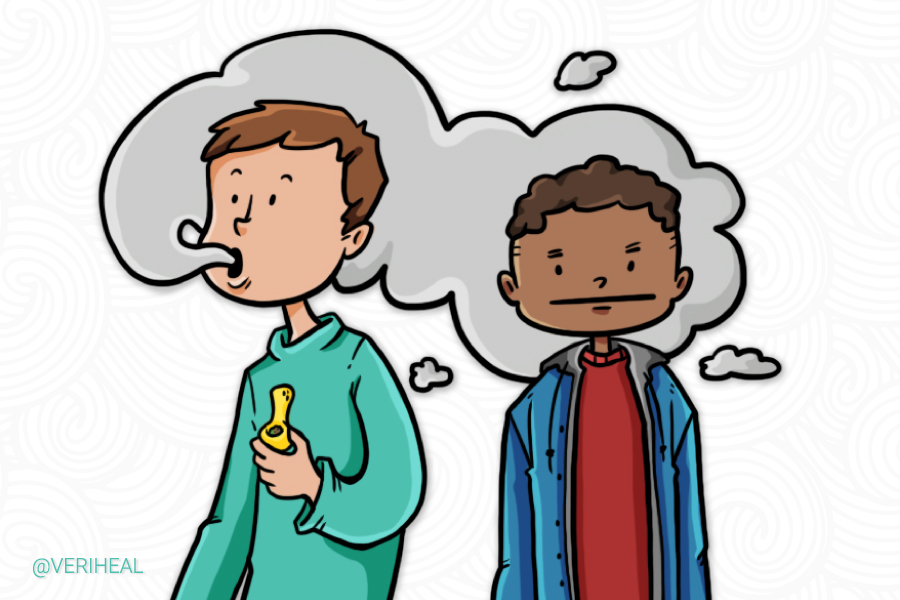A real concern people face while being around those who consume cannabis is whether they will get affected just by being in the same room as the others who consume. This concept is often referred to as getting ‘secondhand high’ or as a ‘contact high’. The idea is the exposure to cannabis smoke from someone else can get you high and/or leave traces of cannabis in your system. This can leave many people feeling worried or anxious but is it true? Does it work that way?
How Bioavailability Works
When we smoke cannabis, around 50% (this amount varies) of the cannabinoids in the cannabis gets absorbed into our lungs and then enter our bloodstream. These cannabinoid compounds include Tetrahydrocannabinol (THC), Cannabigerol (CBG), and Cannabidiol (CBD) amongst others found in smaller quantities. THC averages around 30% in bioavailability when we smoke cannabis. This means that the THC absorbed into the body only goes up 30% of what is in the plant you are smoking.
Bioavailability can be explained as the proportion of the plant that is introduced and circulated around the body, which also has an effect on the body. The bioavailability in cannabis refers to those cannabinoids which circulate and cause effects through the body’s own endocannabinoid system. For example, CBD can cause changes in the endocannabinoid system in order to reduce pain and inflammation
Studies have shown that being able to absorb 100% of the bioavailability from cannabis through smoking is not possible. Suggesting that the smoke exhaled would contain some of the compounds such as THC.
There have been studies on secondhand highs done in the past, but as cannabis evolves and gets stronger, the older research becomes invalid. Fortunately, recent studies have been done and provide us with proof that contact high is real and cannabis smokes should take caution when smoking around non-smokers.
Why You Should Get Your Medical Marijuana Card
Veriheal has satisfied millions of patients nationwide by giving them access to these benefits
- Larger purchase limits
- Peace of mind
- Enhanced legal protection
- Access to higher potency strains
- Save up to 25% on cannabis purchases
- Skip the line at the dispensary
A 2015 Study Used Hotboxing to See if Contact Highs Were Real
One recent study from Johns Hopkins University took on a controlled group approach where one group made up of cannabis smokers and non-smokers, essentially hotboxed a room. There was no ventilation and the non-smokers were instructed not to take any pulls from the toke going around the smokers. Afterward, the blood and urine in all the participants were tested and they found detectable traces of cannabis compounds, such as THC, in those who smoked and in those who were simply around while they smoked.
Hot boxing a room refers to removing any forms of ventilation, being in a small and contained space where the cannabis smoke fills up the room and can be seen filling up the space.
They then did the same experiment with a different group. Except they added ventilation this time. The results were notably different as it turned out that the non-smokers did not have traces of the cannabis compounds in their bodies this time around. The ventilation allows the cannabinoids in smoke to disappear into the air before it is likely to reach you.
This means that non-smokers will only be affected by and have traces of cannabis compounds if they were in a small room, with no ventilation, while others were smoking cannabis. Cannabis smokers should be wary of this as it was also found that the victims of contact highs also showed increases in heart rate, experienced mild to moderate effects from the cannabis as well as displaying minor but detectable levels of impairment in behavior and cognition.
Simply put, cannabis contact highs are real, but they are circumstantial and may not be cause for real concern as most of the cannabis smoking is done, or at least should be done, where there is ventilation. If you are a cannabis smoker, avoid hotboxing any space that contains non-smokers and if you are a non-smoker, do not sit in a room that is being hotboxed.
Author, Share & Comments
















